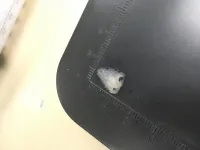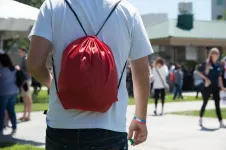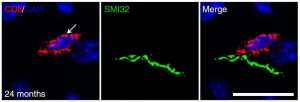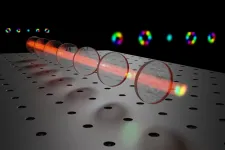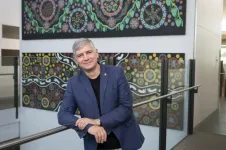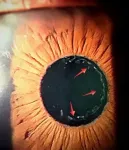(Press-News.org) PULLMAN, Wash. -- Professor Arda Gozen looks to a future someday in which doctors can hit a button to print out a scaffold on their 3-D printers and create custom-made replacement skin, cartilage, or other tissue for their patients.
Gozen, George and Joan Berry associate professor in the Washington State University School of Mechanical and Materials Engineering, and a team of researchers have developed a unique scaffolding material for engineered tissues that can be fine-tuned for the tricky business of growing natural tissue. They report on their research in the journal, Bioprinting. The team also includes researchers from WSU's Gene and Linda Voiland School of Chemical Engineering and Bioengineering as well as from the University of Texas-San Antonio (UTSA), Morehouse College, and University of Rochester. The lead author is Mahmoud Amr, who received his PhD at UTSA.
In recent decades, researchers have been working to use biological material in 3D printing to create tissue or organs for patients recovering from injury or disease. Using 3D printing, or additive manufacturing, makes it possible to print complex, porous, and personalized structures and could allow doctors someday to print out tissue for a patient's particular body and needs. To create biological structures, biological materials known as "bioinks" are dispensed out of a nozzle and deposited layer-by-layer, creating complex "scaffolds" for real biological material and providing a nice place for cells to grow.
Nature, however, has so far been more complicated than researchers can keep up with. Real biological cells like to grow on a scaffold that approaches their own properties. So, for instance, a skin cell wants to grow on a scaffold that feels like skin while a muscle cell will only develop on a scaffold that feels like muscle.
"The success of this method in manufacturing functional tissues relies heavily on how well the fabricated structures mimic the native tissues," Gozen said. "If you want to grow cells and turn them into functional tissue, you need to match the mechanical environment of the native tissue."
The way that researchers have traditionally varied their scaffolds was to simply remove trusses to make them softer or stiffer - a method that is too simple to address all the needed complexity in tissue engineering.
"We don't have a lot of knobs to turn," Gozen said. "You need more degrees of freedom - to create something softer or harder without changing the structure."
The team of researchers developed a new bioink material that allows for customizing properties to closer approach what cells might need. The ingredients for their scaffold include gelatin, gum Arabic, and sodium alginate, which are all common thickening agents used in many processed foods.
Similar to the way a thick rope is made of braided strands, the researchers used three separate chemical processes to tie their three ingredients together into one scaffold material for printing.
Playing with the separate chemical processes then provides a way to finely tune the mechanical properties of the material, allowing them to make a softer or stiffer final scaffold.
"That gives you the capability of tuning the properties without changing the scaffold design and gives you an additional degree of freedom that we are seeking."
By adjusting the chemical bonds between the rope strands, they didn't change the material significantly, and it was amenable for growing cartilage cells.
The work is still in its early stages, and the researchers would like to figure out how to more precisely tune the process and final material. They might look at varying the composition of their three materials or printing at different temperatures, for instance.
Trying to imitate the vast complexity of natural tissue remains a challenge. Even a simple millimeter-sized piece of cartilage on the knee for instance, has three separate and distinct layers, each with different mechanical properties and functions.
"You're not assembling Legos here. It's always about replicating nature that works with the body," Gozen said. "You can make living structures, but they look nothing like the native tissue. Precision is key because there is no single mechanical property target for a single piece of tissue."
INFORMATION:
The research was funded by the National Science Foundation.
Dating violence - physical, sexual, psychological or emotional within a relationship, including stalking - is pervasive on college campuses with far-reaching health implications. One in five women experience a sexual assault in college and students living in sorority houses are three times more likely to experience rape. College students are vulnerable to dating violence because of the influence of their social and living environments.
Researchers from Florida Atlantic University's College of Education in collaboration with Sacred Heart University conducted a study to understand the dating violence experience and perpetration of college-age women, ...
Astronomers have identified more than 4,000, and counting, confirmed exoplanets -- planets orbiting stars other than the sun -- but only a fraction have the potential to sustain life.
Now, new research from UBC's Okanagan campus is using the geology of early planet formation to help identify those that may be capable of supporting life.
"The discovery of any planet is pretty exciting, but almost everyone wants to know if there are smaller Earth-like planets with iron cores," says Dr. Brendan Dyck, assistant professor of geology in the Irving K. Barber Faculty of Science and lead author on the study.
"We typically hope to find these planets in the so-called 'goldilocks' or habitable ...
Researchers at the University of North Carolina at Chapel Hill and Duke University improved HIV care by gamifying it with a mobile gaming application.
Gaming features - like those used to drive airline loyalty and track daily steps --- helped young men living with HIV achieve viral suppression and doubled their chances for reaching near perfect adherence to medication plans, according to a study in AIDS and Behavior.
Gamification can inspire changes in behavior when a doctor's advice or a patient's good intentions are not enough. In this case, motivating those living with HIV to stick to ...
Research funding agencies around the world are testing creative approaches to address urgent needs while laying the foundation for discoveries that will meet the unpredictable demands of the future. According to a new expert panel report from the Council of Canadian Academies (CCA), Canada can bolster its research capacity by reducing administrative burdens, experimenting with funding approaches, and cultivating a robust, resilient, and diverse scientific workforce.
"In the past year we have seen the power and promise of transformative research and the ability of researchers and funding organizations to pivot in times of crisis," said Shirley M. Tilghman, PhD, O.C., FRS, Chair of the Expert Panel. "But the pandemic has also exacerbated existing inequalities ...
Almost half of the parents who have children together with a parent with schizophrenia or bipolar disorder, are themselves burdened by psychological issues. This can affect family life and the children. This is shown in the research result from the major Danish psychiatry project iPSYCH.
We typically choose a partner who resembles us in relation to social status, education and, to some extent, also income. Research has previously established this. A new study now shows that almost half of the parents who have children with a partner who suffers from schizophrenia or bipolar disorder themselves meet the criteria for a mental disorder. By comparison, this is 18 percent for parents in the control group.
The results stem from The Danish High-Risk and Resilience ...
Aging is the biggest risk factor for perturbation of the nervous system, even in the absence of distinct disease or trauma. For yet unknown reasons, the impulse conducting, myelinated projections and synaptic connections between nerve cells are especially vulnerable to aging-related degeneration. These pathological alterations often manifest as cognitive, sensory, and motor decline in older adults and represent a serious socio-economic challenge.
Malactivation leads to damage
Scientists have long assumed that inflammation plays an important role in this process. Mal- or overactivation of distinct cells belonging to the innate immune system - the microglia - appears to promote damage of nerve fibers and synapses ...
As the digital revolution has now become mainstream, quantum computing and quantum communication are rising in the consciousness of the field. The enhanced measurement technologies enabled by quantum phenomena, and the possibility of scientific progress using new methods, are of particular interest to researchers around the world.
Recently two researchers at Tampere University, Assistant Professor Robert Fickler and Doctoral Researcher Markus Hiekkamäki, demonstrated that two-photon interference can be controlled in a near-perfect way using ...
For the first time, international experts in psychology have built a framework to diagnose Compulsive Buying-Shopping Disorder - promising help for people struggling to manage their spending behaviour and mental wellbeing.
The new guidelines, published in the Journal of Behavioral Addictions, confirms that excessive buying and shopping can be so serious as to constitute a disorder, giving researchers and clinicians new powers to develop more targeted interventions for this debilitating condition.
The international collaboration, led by Professor Mike Kyrios from Flinders University's Órama Institute for Mental ...
SINGAPORE - A team of researchers from the Agency for Science, Technology and Research's (A*STAR) Genome Institute of Singapore (GIS) and Bioprocessing Technology Institute (BTI), as well as Singapore Eye Research Institute (SERI), have identified a genetic mutation (functionally defective CYP39A1 gene) associated with exfoliation syndrome, the most common cause of glaucoma. The findings could pave the way for future research on the cause of exfoliation syndrome and potential cures. Their research was published in Journal of the American Medical Association (JAMA) on 24 February 2021.
Exfoliation syndrome is a systemic ...
Artificial intelligence that enhances remote monitoring of water bodies - highlighting quality shifts due to climate change or pollution - has been developed by researchers at the University of Stirling.
A new algorithm - known as the 'meta-learning' method - analyses data directly from satellite sensors, making it easier for coastal zone, environmental and industry managers to monitor issues such as harmful algal blooms (HABs) and possible toxicity in shellfish and finfish.
Environmental protection agencies and industry bodies currently monitor the 'trophic state' of water - its biological productivity - as an indicator of ecosystem health. Large clusters of microscopic algae, or phytoplankton, is called eutrophication and can ...
